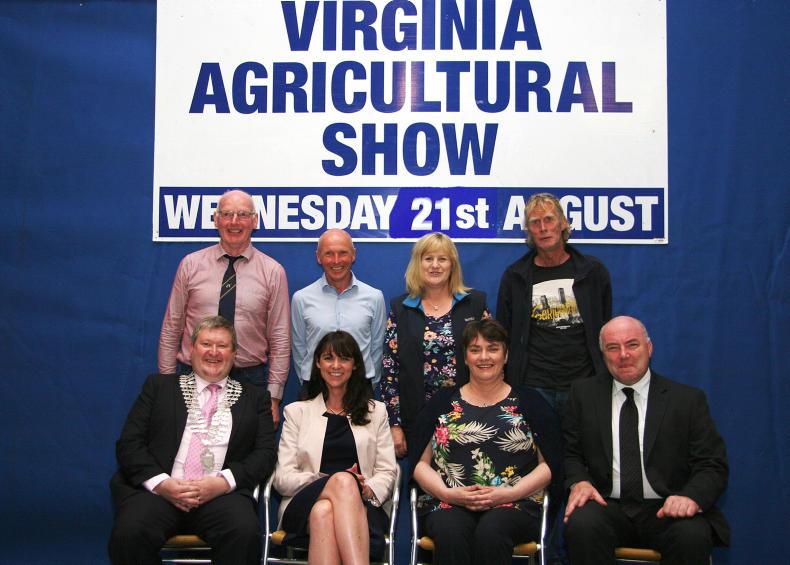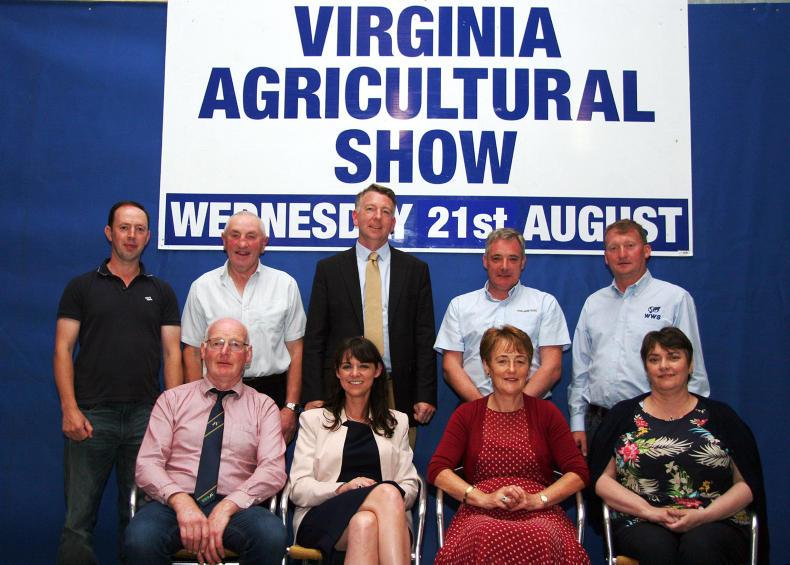Last week on two separate occasions I was witness to the positive power of community volunteerism. I was asked to speak at the launch of the Virginia Show, a show I have been to a good few times over the years but the history of which was something I was less aware off. Although my local show, the Iverk (Saturday 24 August), prides itself on being the “oldest agricultural show”, Virgina has been running since 1942. The launch was held in the Virginia Show centre, which is a fabulous amenity for the community. There was lots of things going on in the building separate to the launch, of which almost 100 people attended.
In preparation for my talk, I started looking for a few facts and figures on Ireland’s volunteering culture. By my estimate, it appears that apart from the 300,000 people who volunteer through charities, there are a further 280,000 people giving of their time in other volunteer associations every day of every week. This is split relatively evenly between men and women, with an estimated value of this charity work alone at over €1.5bn, accounting for 68 million hours per year.
Mental health in rural Ireland is a serious problem and this is where the community and voluntary sector plays a key role in sustaining healthy and happy communities. Suffice to say, volunteering is not just good for communities, it is good for the people who participate too. Challenges remain for people to get involved and these challenges are similar among men and women – lack of time, with many competing responsibilities, a lack of volunteers, an over-reliance on the same people; and perhaps an inability to move on for some.

In the Virginia Show Centre at the launch of this year's show were (front, l to r): Shane P O'Reilly (chair Cavan County Council) Amii McKeever (special guest-editor Irish Country Living in the Irish Farmers Journal) Mary Gaynor (show secretary) John Kearney, (back, l to r): Patrick Gaynor (show president) Donal Brady, Christine Reynolds and Paul Weldon.
Sometimes inadequate financial support is an issue, with schemes such as Leader being difficult to access, or raising matching funding at times beyond the capability of small villages and communities.
Fundraisers are a vital element of community projects and the second event that I made my way to on Saturday, the Cullohill Folly Festival, is one such fundraiser. Margaret Hawkins previously covered this fabulous little village in our It Takes a Village series. She learned that the Folly Festival has become an important way to generate income to facilitate grant applications for other ongoing community projects. In the article, John Scanlon, treasurer of the community council, calls out the community itself as it’s most valuable asset.
Food is becoming a more important element at festivals also and it’s now rare if there is not some form of a food demo. I spoke with chef Kwanghi Chan who was in attendance on the day to carry out a cookery demonstration using Irish beef. Kwanghi cooked a tomahawk steak with an Asian salad. I overheard a few of the men behind me saying that they wouldn’t be keen on the salad – however, that did not stop a rush to the table when it was all cooked. Two 1,300g steaks were gone in a matter of minutes, as was the salad. Kwanghi works to support Bord Bia’s work in China, but I think it’s important that we support our own too.
In Irish Country Living we will continue to write about the work of community volunteers in the hope that others will be inspired to give of their time also in support of rural Ireland. One such initiative is featured in this week’s Ageing Gracefully special, with Mairead speaking with the voluntary officers of victim assistance.
Read more
The pig man’s challenge is often a window to the future
Women in the headlines and Mercosur a red line for farmers
Last week on two separate occasions I was witness to the positive power of community volunteerism. I was asked to speak at the launch of the Virginia Show, a show I have been to a good few times over the years but the history of which was something I was less aware off. Although my local show, the Iverk (Saturday 24 August), prides itself on being the “oldest agricultural show”, Virgina has been running since 1942. The launch was held in the Virginia Show centre, which is a fabulous amenity for the community. There was lots of things going on in the building separate to the launch, of which almost 100 people attended.
In preparation for my talk, I started looking for a few facts and figures on Ireland’s volunteering culture. By my estimate, it appears that apart from the 300,000 people who volunteer through charities, there are a further 280,000 people giving of their time in other volunteer associations every day of every week. This is split relatively evenly between men and women, with an estimated value of this charity work alone at over €1.5bn, accounting for 68 million hours per year.
Mental health in rural Ireland is a serious problem and this is where the community and voluntary sector plays a key role in sustaining healthy and happy communities. Suffice to say, volunteering is not just good for communities, it is good for the people who participate too. Challenges remain for people to get involved and these challenges are similar among men and women – lack of time, with many competing responsibilities, a lack of volunteers, an over-reliance on the same people; and perhaps an inability to move on for some.

In the Virginia Show Centre at the launch of this year's show were (front, l to r): Shane P O'Reilly (chair Cavan County Council) Amii McKeever (special guest-editor Irish Country Living in the Irish Farmers Journal) Mary Gaynor (show secretary) John Kearney, (back, l to r): Patrick Gaynor (show president) Donal Brady, Christine Reynolds and Paul Weldon.
Sometimes inadequate financial support is an issue, with schemes such as Leader being difficult to access, or raising matching funding at times beyond the capability of small villages and communities.
Fundraisers are a vital element of community projects and the second event that I made my way to on Saturday, the Cullohill Folly Festival, is one such fundraiser. Margaret Hawkins previously covered this fabulous little village in our It Takes a Village series. She learned that the Folly Festival has become an important way to generate income to facilitate grant applications for other ongoing community projects. In the article, John Scanlon, treasurer of the community council, calls out the community itself as it’s most valuable asset.
Food is becoming a more important element at festivals also and it’s now rare if there is not some form of a food demo. I spoke with chef Kwanghi Chan who was in attendance on the day to carry out a cookery demonstration using Irish beef. Kwanghi cooked a tomahawk steak with an Asian salad. I overheard a few of the men behind me saying that they wouldn’t be keen on the salad – however, that did not stop a rush to the table when it was all cooked. Two 1,300g steaks were gone in a matter of minutes, as was the salad. Kwanghi works to support Bord Bia’s work in China, but I think it’s important that we support our own too.
In Irish Country Living we will continue to write about the work of community volunteers in the hope that others will be inspired to give of their time also in support of rural Ireland. One such initiative is featured in this week’s Ageing Gracefully special, with Mairead speaking with the voluntary officers of victim assistance.
Read more
The pig man’s challenge is often a window to the future
Women in the headlines and Mercosur a red line for farmers







 This is a subscriber-only article
This is a subscriber-only article









SHARING OPTIONS: